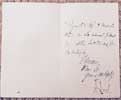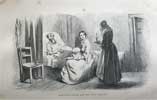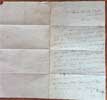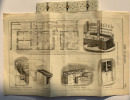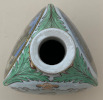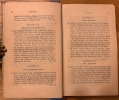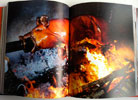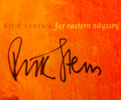The Modern Housewife
OR MENAGERE. COMPRISING NEARLY ONE THOUSAND RECEIPTS FOR THE ECONOMIC AND JUDICIOUS PREPARATION OF EVERY MEAL OF THE DAY, WITH THOSE OF THE NURSERY AND SICK ROOM, AND MINUTE DIRECTIONS FOR FAMILY MANAGEMENT IN ALL ITS BRANCHES. Illustrated With Engravings, INCLUDING THE MODERN HOUSEWIFE'S UNIQUE KITCHEN, AND MAGIC STOVE. BY ALEXIS SOYER, AUTHOR OF "THE GASTRONOMIC REGENERATOR," (REFORM CLUB). LONDON: SIMPKIN, MARSHALL, & CO., STATIONERS' HALL COURT; OLLIVIER, PALL MALL. 1849.
FIRST EDITION. 8vo. 1fep. Frontispiece of Soyer. Title Page. [1] 1p Dedication to 'The fair daughters of Albion'. [1] (1)iv Contents. (1)vi-xii Introduction. 1-410. Opp. p393 Engraved picture of Soyers Magic Stove. Opp.396 Soyers Modern Housewife's Kitchen Apparatus. (1)412-426 Index. 427-430 Addenda. [1] Illustration of Soyers Sauce. 6p Advertisements for Soyer's products. 1fep. The text block is tight. Uniformly very lightly age browned through out. The little page a little sge darkened and the frontis with a little light foxing. Original light brown cloth covers and spine with the ornate blind tooling. The tooling on the spine has a little gilt and the blind tooling not as distinct as the covers. Rare in this good original condition.
- The blind tooled covers are typically Soyer. That is to say the tooling is designed on the bias and in Soyer's own words - a'la zoug zoug. He had this obsession with everything he designed or touched. His famously flamboyant rich colourful clothes were all cut on the bias - a'la zoug zoug, even his large bonnets worn at a rakish angle on the side of his head. Nothing came close to the dress conventions of the day. Altogether an unmistakable sight. This also reflected another strong aspect of his personality. That of self promotion. He obsessively wrote letters to the papers of the day explaining and aggrandising his endeavors, and was a prolific letter writer, maintaining relationships with many important personages he came into contact with, and in some way or another making sure it was publicly recorded in print. Despite this aspects of his personality he was a very bighearted man with a penchant for designing many good and important pieces of kitchen equipment. He had a very creative drive that had a sound pragmatic basis. This larger than life man died young but left a huge legacy that is still being examined and written about today.
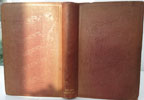
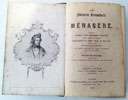

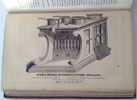

click on image to enlarge

Antiquarian category
ref number:
11206 
